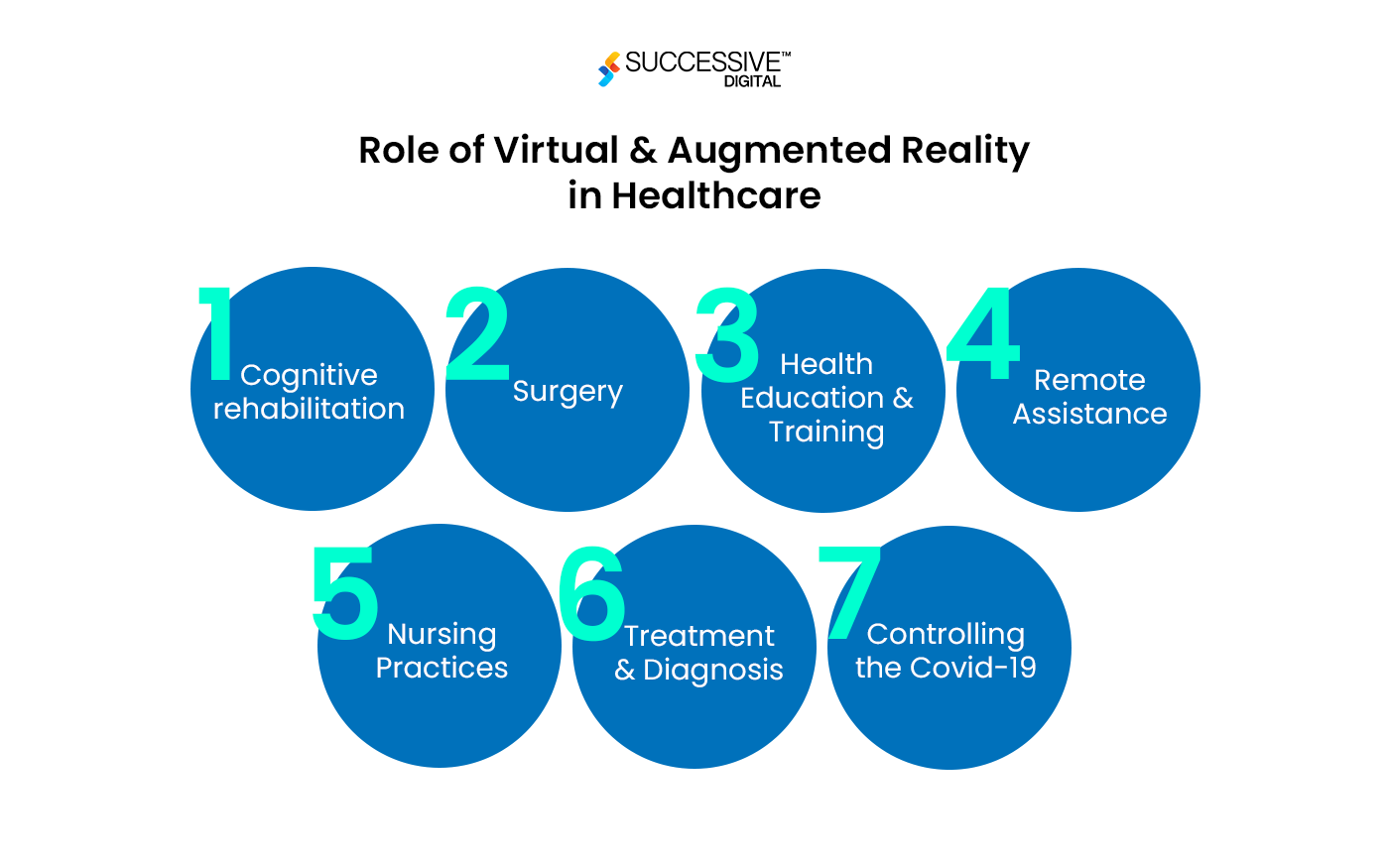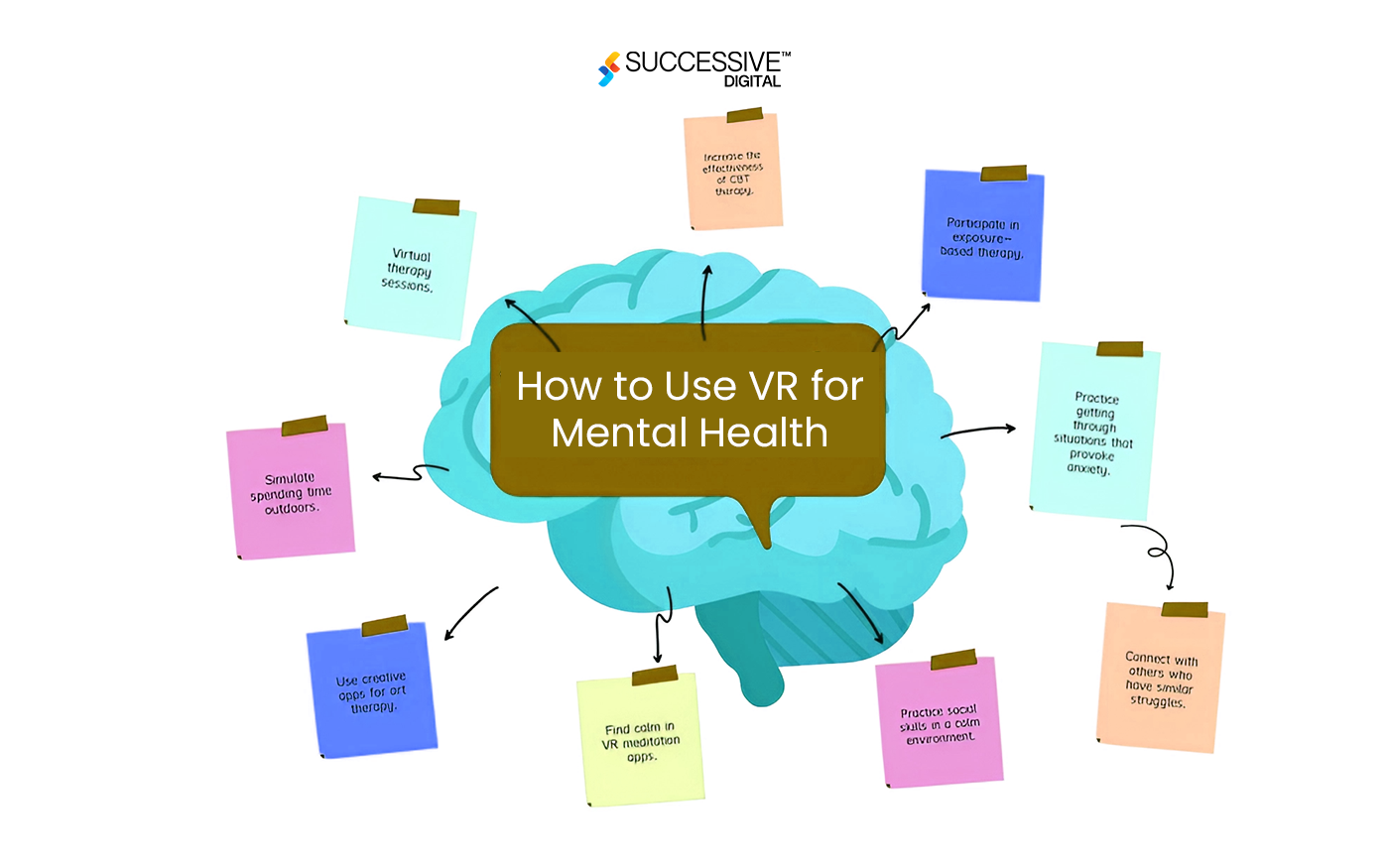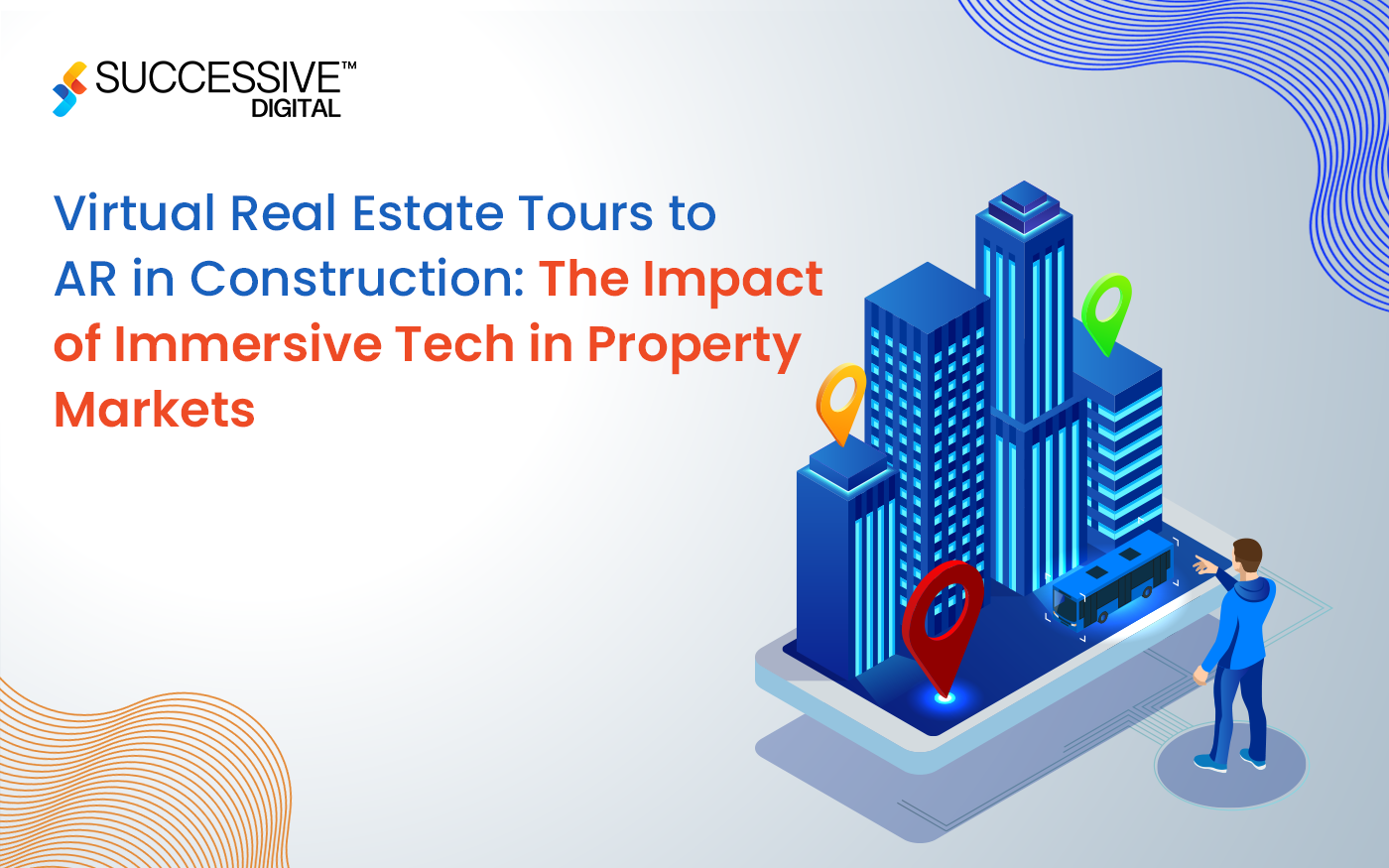In the rapidly evolving healthcare field, immersive technologies combined with virtual reality (VR) and augmented reality (AR) are ushering in a new era of patient care and medical training. From redesigning surgical training to enabling remote assessment to assisted rehabilitation techniques, immersive technology is gaining momentum to reshape health industry, globally. This blog explores the impact of VR and AR on remote consultation, describing the future trends and possibilities in patient care and healthcare immersive technology.

Transforming Surgical Training with Virtual Reality in Healthcare
-
Immersive Surgical Simulations:
Virtual reality has emerged as an unprecedented healthcare innovation in surgical education and training space. Surgical techniques are complex and require high precision, making immersive simulations invaluable for trainees and practicing surgeons.
Osso VR is a leading V.R. surgical training platform provides surgeons with access to orthopedic surgical training, online procedures, and real-time feedback, helping them to improve surgical skills and affect individual outcomes along with higher proficiency.
-
Enhanced Visualization with Augmented Reality:
AR enhances surgical procedures by providing real-time contextual information to surgeons during surgery. Additionally, AR includes digital audits of the healthcare provider’s input, improving visualization and decision-making. This immersive technology has proven particularly useful in procedures that require unique guidance and anatomy.
The use of AR in neurosurgery, as exemplified by organizations such as Touch Surgery, allows surgeons to visually create critical structures in 3D over during procedures. This helps to give proper instructions and reduces the margin of error.
-
Remote Mentoring and Collaboration:
AR and VR facilitate exceptional patient care with remote mentoring and collaboration, allowing experienced surgeons to mentor and instruct their peers or trainees remotely. This capability is critical when immediate professional recommendations are desired or when physical presence is challenging.
Proximie, the AR platform, enables surgeons to fully support and guide their colleagues in real-time at every stage of surgery. This has enabled its proven utility in situations where immediate expertise is needed, especially in improving affected patients’ outcomes in critical cases.
Revolutionizing Remote Consultations
-
Virtual Clinics and Telemedicine:
Integrating VR and AR into telemedicine is reshaping the quality of remote diagnosis and patient care. Virtual clinics via immersive technology allow patients and healthcare providers to communicate seamlessly, providing an added level of engagement over traditional methods. This is useful for follow-ups, ongoing disease prevention, and mental health counseling.
XRHealth, a VR health organization, provides virtual clinics for various medical conditions, including physical therapy, pain management, and psychological support. Patients can receive personalized care from the comfort of their own homes, allowing greater accessibility and adherence to treatment routines.
-
AR-enhanced Remote Diagnostics:
AR in healthcare innovation is being used for remote diagnosis, allowing healthcare professionals to overlay diagnostic information onto the patient’s physical environment. This makes the assessment more accurate and aid informed choices during the virtual consultation.
AccuVin, a device based entirely on AR, uses infrared light to immediately image a patient’s veins intravenously onto the skin. This helps healthcare professionals find veins incorporating procedures involving blood draws or intravenous infusions during online consultations.
-
Virtual Reality for Mental Health Support:

VR is a great way to improve the mental health by enhancing the health environment with immersive technology for therapy and relaxation. Patients can interact in virtual scenarios designed to reduce stress, tension, or fear, offering new ways to support mental recovery.
Limbics is a VR mental health platform for people with a range of stress disorders. Patients may navigate environments that seem to simulate anxiety-provoking situations, allowing them to face their fears in a controlled and supportive environment and treatment.
Immersive Technology for Rehabilitation and Therapy
VR in Physical Rehabilitation:
VR is making significant contributions in physical rehabilitation with the help of providing engaging, customized workouts for patients who are improving from an injury or surgery. VR environments motivate victims for longer rehabilitation classes, enhancing compliance and speeding healing.
The use of VR in the stroke rehabilitation, with the help of MindMaze, includes interactive gaming activities that organize and motivate patients. This medical training approach not only improves physical function but further enhances neuroplasticity for enhanced rehabilitation outcomes.
AR-guided Physical Therapy:
AR has been a game-changer in immersive technology that enhances traditional physical therapy by helping deliver real-time surgery and feedback. Patients can control customized exercises with an AR overlay, ensuring that prescribed programs are followed correctly.
Reflexion Health’s AR-advantaged physical therapy system uses motion-tracking technology to guide patients through physical exercises. The system monitors actions and provides instant feedbacks, improving the effectiveness of therapy sessions.
VR-based Exposure Therapy for PTSD:
Virtual reality is proving to be an effective technology in healthcare innovation for promoting post-traumatic stress disorder (PTSD). By recreating stimulating situations in a controlled digital environment, patients can cope with and manage their depression under the supervision of mental health professionals.
Limbix, in addition to its programs for anxiety disorders, is using VR for promotional therapy in the treatment of PTSD. Veterans and individuals with PTSD can engage in virtual scenarios to address and cope with traumatic memories in a supportive therapeutic setting.
Future Trends and Potential in Patient Care and Medical Education
-
Personalized Treatment Plans:
The future of immersive technology for healthcare includes the introduction of specialized treatment plans. Combined with VR and AR, AI algorithms can analyze male or female patient data to tailor interventions, medications, and rehabilitative physical exercises. This ensures a new approach to targeted and robust healthcare management.
-
Expanded Use of Holographic Displays:
Holographic displays, an advanced form of AR have the potential to revolutionize medical training and surgical management systems. By presenting three-dimensional anatomical models, physicians can enhance their knowledge and choices in ways that traditional 2D models cannot on scale.
-
Global Access to Expertise:
Immersive technology provides specialized medical expertise worldwide. VR and AR platforms allow healthcare professionals in remote or underserved areas to connect with experts for real-time surgery, communication, or even online assistance at any stage of complex surgery.
-
Incorporation of Wearable Devices:
Integrating VR and AR into wearables is vital in fitness monitoring. Wearable AR glasses provide users with real-time fitness data, medication reminders, and even augmented vision assist people’s visibility with visual impairment, improving average patient care and well-being.
-
VR-based Medical Education Platforms:
Virtual reality in medicine is transformative and offering immersive simulations for medical practitioners and trainers to practice surgical procedures, diagnostic skills, and patient interactions in a futuristic healthcare set-up.
-
AI-powered Virtual Health Assistants:
The synergy of AI and VR/AR will lead to the development of virtual health assistants. These intelligent virtual entities help patients manage medication, monitor vital signs, and provide real-time wellness recommendations. Such assistance help control emergency healthcare proactively.
-
Blockchain for Health Data Security:
As the healthcare industry embraces immersive technology, the need for a seamless storage and sharing associated with healthcare’s personal data will be paramount. Blockchain can provide a decentralized and stable system for processing healthcare data. Patients can have more control over their information, and healthcare providers can access more accurate and secure records for better-informed decision making.
-
Integration of 5G Technology:
The integration of 5G technology into the healthcare industry and medical training will revolutionize data transfer speeds and communications. It offers real-time communication, stunning video streaming, and simple reporting. In healthcare systems with latency, including remote surgery and face-to-face consultations, 5G technology will be vital in improving accessibility and adoption.
The future of healthcare is incredibly connected to the transformative power of immersive technology. From redesigning surgical training and enabling remote conversations to redefining rehabilitation and prevention, VR and AR are catalysts for high-quality exchanges. The examples presented highlight the tangible impact of healthcare innovation on personal care and medical training. As he industry evolves, the ongoing trends and powerful applications reflect a panorama of healthcare in which advanced technologies are vital in delivering customized, convenient, and adequate healthcare experiences.












